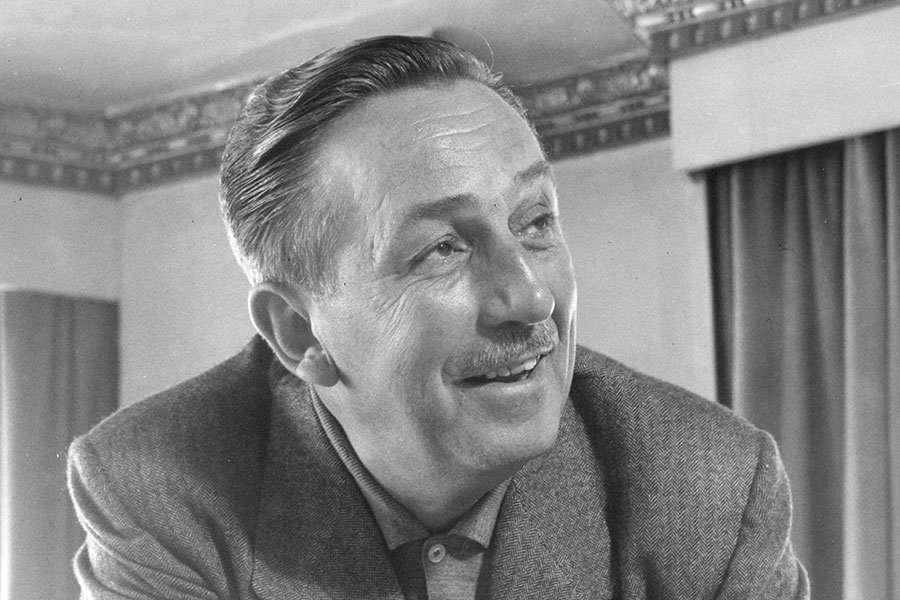In June 2016, Bob Iger (above left, with George Lucas) was in China overseeing preparations for the opening of Shanghai Disneyland. It was the culmination of an 18-year effort and a $6 billion investment that the CEO calls “the biggest accomplishment of my career.” The day before the opening, as Iger was leading a VIP tour of the new park, he was informed that a two-year-old boy had been killed in an alligator attack at Walt Disney World in Florida.
A highly capable Disney crisis team was already on the scene and Iger dictated a public statement. Everything that could be done was being done, but the CEO felt compelled to try to speak to boy’s parents. Once he got on the phone with the boy’s father, Iger told him that he was a father, too, and a grandfather, but even so, he “couldn’t fathom what they must be going through.”
Sobbing, the boy’s father asked Iger to promise this would never happen to another child. He promised. “I sat there shaking on the edge of my bed,” Iger writes in his book, The Ride of a Lifetime: Lessons Learned from 15 Years as CEO of the Walt Disney Company. “I’d been crying so hard that both my contact lenses had come out.”
When you visit Disney World, you can see one result of that promise: There are ropes, fences, and warning signs around the lagoons and canals on the property. They were installed within twenty-four hours of the phone call, across an area twice the size of Manhattan.
It’s a gut-wrenching story—an odd one to find anywhere in a CEO’s memoir, let alone in its prologue. Being the skeptical type, I wondered about Iger’s motives for telling it. He is as polished and professional an executive as I have ever seen, and a welcome contrast to two flavors of leaders that we see too often these days: posturing, blurting assholes who seem to have no self-control whatsoever; and cold, amoral automatons whose sole concern seems to be the value of their stock options.
Iger definitely isn’t the former. He could be a particularly well-disguised example of the latter—I don’t know him personally and can’t say for sure. But I suspect from reading The Ride of a Lifetime and following Disney’s fortunes over the past 20 years that he is not.
It’s also odd that the empathy that Iger demonstrated during that call isn’t one of the ten principles “necessary to true leadership” that he lists a few pages later. The closest he gets to it is the principle of fairness, which he says, requires empathy and accessibility. Yet, Iger’s tenure at Disney is such a compelling testament to the power of empathy that both veteran and aspiring leaders should study it.
It’s hard to fathom now, but 15 years ago, Disney was in the doldrums. CEO Michael Eisner’s hot streak had run out years earlier and he had been pushed out of the company. Iger, who was COO under Eisner, was nowhere near a hands-down favorite to succeed him.
Iger sqeaked his way into job, but shareholders Roy Disney and Stanley Gold, who had been instrumental in ousting Eisner, promptly sued Disney’s board for choosing him in what they claimed was a “fraudulent succession process.” Iger says the suit was groundless, and the company could have fought and easily won it. Instead, he met with Gold and Disney and heard them out.
Iger put himself in Roy Disney’s shoes—and realized how disrespected and hurt he felt by the company that his uncle and father had founded. Instead of calling in the lawyers, he offered Disney a ceremonial role at the company, a small consulting fee, and an office on the lot.
“Just like that, a crisis that threatened to loom over my early days as CEO was resolved,” writes Iger. “A little respect goes a long way, and the absence of it is often very costly. Over the next few years, as we made the major acquisitions that redefined and revitalized the company, this simple, seemingly trite idea was as important as all of the data-crunching in the world: If you approach and engage people with respect and empathy, the seemingly impossible can become real.”
Iger promptly proved it by turning his attention to the seemingly irreparable rift between Disney and Pixar. Pixar, which was controlled by majority shareholder Steve Jobs, made the films that had been the only bright spot in Disney’s animation business for years; Disney distributed them. When the distribution contract come up for renewal Eisner and Jobs went head-to-head at the negotiating table. Eisner lost the contract.
Iger healed the rift by putting himself in Steve Jobs’s shoes. “Steve responded to boldness, and I wanted to signal to him that there could be a different way of doing business with Disney going forward. Among his many frustrations was a feeling that it was often too difficult to get anything done with us. Every agreement needed to be vetted and analyzed to within an inch of its life, and that’s not how he worked,” he explains. “I wanted him to understand that I didn’t work that way, either, that I was empowered to make a call and that I was eager to figure out this future together, and to do so quickly. I thought that if he respected my instincts and my willingness to take this risk, then maybe, just maybe, the door to Pixar might crack open again.”
It didn’t just crack open. It led to Disney acquiring Pixar in 2006—the first in a string of deals, including Marvel, Lucasfilms (Star Wars), and the $71 billion purchase of 21st Century Fox, that made it the second largest media company in the world.
The Pixar deal hinged on Iger sussing out the concerns of the animation studio’s leaders, John Lasseter and Ed Catmull, who wanted to ensure that it would not be subsumed by Disney. Iger assured them that it wouldn’t, but he did more than talk. He negotiated a “social compact” that guaranteed that Pixar would maintain its own identity and culture.
The key to the Marvel deal was CEO and controlling shareholder Ike Perlman, who had a reputation for being tough and proud. “I went to meet Ike at Marvel offices in midtown Manhattan,” says Iger. “I wanted him to feel that I was there out of respect, so I went to New York expressly to meet with him and showed up by myself, not with a team of Disney executives.”
Both men knew what Iger wanted, but he took the time to get to know Perlman over several days. Iger also invited Marvel’s key creatives to Disney. “I uttered the same sentence to them that I had repeated multiple times during my negotiations with Steve and John and Ed,” he says, “‘It doesn’t make any sense for us to buy you for what you are and then turn you into something else.’” Then, Iger waited for Perlman to signal that he was willing to enter serious negotiations, instead of trying to push for them himself.
The same theme of empathy repeats itself in the deals with George Lucas at Lucasfilms and Rupert Murdoch at 21st Century Fox. Each was a unique deal involving very different personalities, but empathy always played a key role. “You have to know what you want out of any deal, but to get there you also need be aware of what’s at stake for the other person,” says Iger.
Figuring out what’s at stake for others and acting on what you’ve figured out is empathy in action.




































